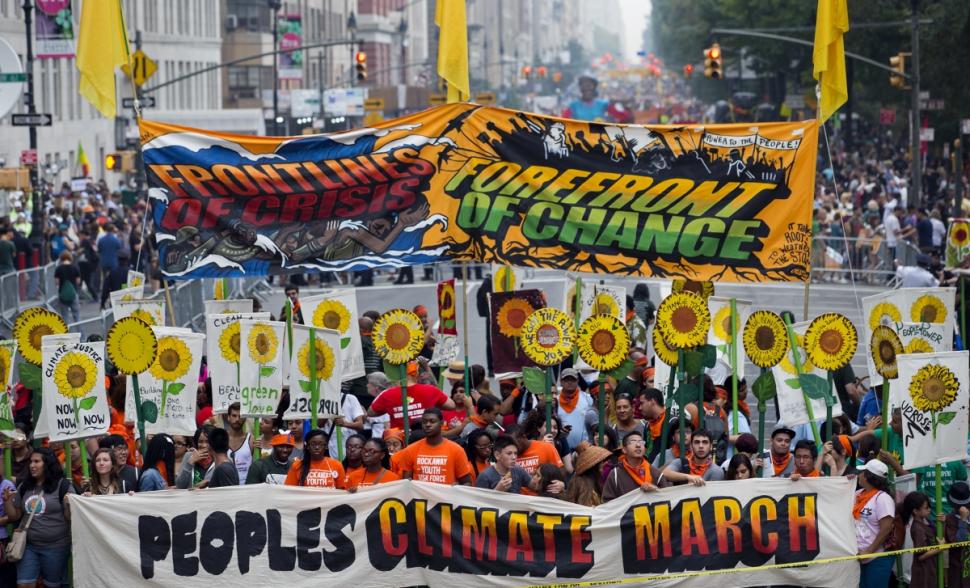In October 2010, Malcom Gladwell wrote a provocative piece for The New Yorker, “Small Change: Why the Revolution will not be Tweeted.” He argued that Social Media lacks the ability to form the kind of close, personal ties that push people to take the drastic action necessary to enact change.
Much has changed since 2010. Just two months after Gladwell’s article was published the revolutions of the Arab spring showed the power of social media to do exactly what he feared it could not –to organize large groups of people to take big, drastic action, even in the face of danger. And while the debate about social media’s role in movements for social change continues, the debate about whether or not it has a role at all is essentially over.
The Arab spring showed that the revolution will, in fact, be tweeted.
Gladwell’s article was right in one respect: Twitter is not a tool for creating close social bonds – the kind of close social bonds that inspired the lunch counter sit-ins of the 60s, for example. But it is a great tool for spreading ideas to a wider audience than was ever possible without it. It is a tool for giving the common people a voice, for creating your own attention, when traditional news sources give you short shrift.
The People’s Climate March goes Viral
This past Sunday, 400,000 people took part in the People’s Climate March in New York City to demand action on climate change. The march made the front page of The New York Times, but received the usual mix of coverage and inattention that climate activists have come to expect from traditional news media.
The same day, there was a second climate march- one that made its own coverage. It was a digital march that engaged participants across the globe on the new battleground for change: social media.
In this march, the numbers were just as astounding. The organizers of the People’s Climate march estimate that on that day their digital campaign reached 600 million people in 70 countries. According to our Tint analytics, those using the hashtag #peoplesclimate generated a jaw dropping 956.33 million social impressions on Twitter alone.
We spoke with Thelma Young, Digital Organizer for the March, about how social media is helping them to amplify the voices of their supporters.
Digital March by the Numbers
On the day of the march, Thelma and the rest of the twelve person digital team were ready. They had Tweetdeck tracking hashtag use on Twitter in real time, and they had Tint pulling in related social posts from Twitter, Instagram, Facebook, and YouTube, to be displayed in real-time on their website. Their website’s live social hub attracted nearly 400,000 visitors, presumably including many that were not among the 400,000 busy marching in the streets that day.
The digital team took turns generating and moderating content – team members took shifts on the ground, “embedded” at the march, where they took pictures and posted to social platforms, while the rest of the team monitored and moderated content from their control center where they watched the social media attention roll in.
“Watching the feed come in from Twitter was crazy,” Thelma told me. On the day of the march, tweets rolled in at an average of 3 tweets per second. At times, it was much faster than that.
At the end of the day, there had been 630,00 social posts about the march, generating almost 1 billion social impressions.
The team used Tint to pull social posts through onto their website, approving posts with the iPhone app, which allowed them to swipe left or right to quickly accept or reject posts. At a certain point, they stopped moderating the overwhelming flow of content and let the tweets roll in, trolls and all.
People, Not Celebrities
In the days following the event, the celebrities present at the march have faded into the background, and the sheer numbers and diversity of the general crowd have become the story.
At first, the news focused on big names, like UN Secretary-General Ban Ki-Moon, Leonardo DiCaprio, Jane Goodall, and Sting. @PeoplesClimate themselves tweeted a screenshot of the Tint analytics showing the most influential contributors to their campaign, based on who had the most Twitter followers.
To a degree, celebrities are an important piece of the story. The list of the most influential tweeters is a wonderful and peculiar mix of politicians, media outlets, and entertainers, showing just how universal and diverse the climate movement has become: Obama tops the list, followed by The New York Times, Jason Mraz, Rolling Stone Magazine, the UN, and Chris Rock.
But amplifying the voices of celebrities is not the main benefit of social media for social justice campaigns. Rather, social media helped keep the march people-oriented. The press covered celebrities, but social gave everyone a voice.
“Social media really helped spread the march far beyond New York itself,” said Thelma, “It helped communicate that it was a people’s march. Yes, we were on the cover of the New York Times, but everyone has their own personal photos and their own personal stories.”

Social Media meets Social Change
If the Arab Spring opened the debate about Social Media as a tool for Social Change, the People’s Climate March closed it.
“People were talking about the march all across the internet,” said Thelma.
1 billion impressions crossing the borders of 70 countries has shown how effectively social media can be used to amplify the voices of a movement that has long suffered from a lack of traditional news coverage. In the coming months and years, the climate movement will doubtless continue to use social media to raise their voices. Other cause-oriented organizations can learn a lot by watching what they’re doing.
If social media is the new place for mass organizing and serious conversations, then those who know how to encourage participation and utilize social to the fullest extent, will be best poised to make the big impactful changes that this world needs. As the marchers on Sunday shouted, “To change everything, you need everyone.”






